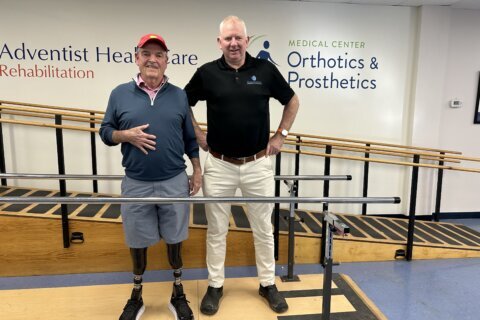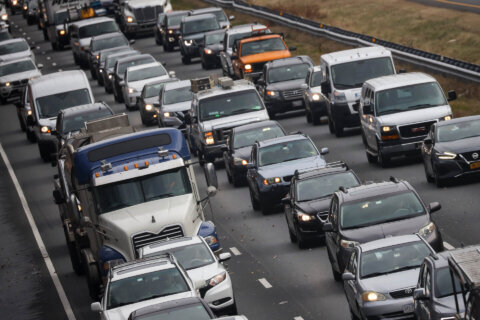Editor’s note: This story has been updated to correct some of the figures used and include additional comment from D.C Public Schools and the Food Research and Action Center.
The COVID-19 pandemic caused a dramatic drop in meals provided by schools across the U.S., including in D.C. — but as other school systems improved, the District never caught up, according to a new report.
Meals provided by D.C. Public Schools went from roughly 1 million in October 2019 to about 208,000 in April 2020, a trend followed nationally, the study from the Food Research and Action Center showed.
However, from April to October — when other school districts showed improvement — the numbers of meals provided by D.C. dipped even further, down to fewer than 100,000. All told, D.C. meals dropped 90% from October 2019 to October 2020.
The FRAC report studied 54 large school districts across the U.S. from October 2019 to October 2020. The survey showed a 54% drop in breakfasts and 70% drop in lunches from October 2019 to April 2020. The report showed a modest improvement for school districts from April 2020 to October 2020.
The figures in the study represent meals served through the School Breakfast Program, the Seamless Summer Option, the National School Lunch Program and the Summer Food Service Program, as well as paid meals.
In a response provided after this story was published, a D.C. Public Schools spokeswoman said the report’s categories do not capture all the meals provided by the school system since the pandemic.
The FRAC report includes survey responses for D.C. and three school districts in Virginia — the cities of Alexandria, Richmond and Norfolk. No school districts in Maryland were included in the study.
“The shuttering of schools in the spring of 2020 and the variety of school schedules in the fall of 2020 have dramatically reduced participation in school breakfast and lunch and have significantly changed program operations,” the report said.
DC meals served
In October 2019, 408,550 breakfasts and 641,755 lunches were delivered to D.C. students, according to the report.
Fast forward one year to October 2020, when the District and the rest of the U.S. had largely transitioned to virtual learning, those numbers drastically reduced to 49,629 and 49,629, respectively.
The changes in food distribution equate to a 92% drop in lunches and an 88% drop in breakfasts.
D.C. said the report doesn’t include all the meals it served since the pandemic.
“DCPS has continued meal service throughout the pandemic as students moved to learning at home,” DCPS spokeswoman Elizabeth Bartolomeo said in the email statement after this story was published. “The meal categories that the FRAC report is referring to do not apply to the current program. Since March 2020, DCPS has been operating under the Emergency Summer Food Service Program (where all DC resident youth, aged 18 and under are eligible to participate at no cost). To date, we served more than 1.6 million emergency meals since March 2020.”
According to Bartolomeo, “All DC youth ages 18 and younger may receive free grab-and go meals at DCPS meal site locations and some also offer groceries or supper and snack, too. DC youth are not required to be an enrolled student to receive free grab-and- go meal services. To limit the number of trips, families need to make to meal sites, youth, or parents/guardians on their behalf, can receive up to 3 breakfast and 3 lunch meals at a time. Certain sites also offer Market Boxes featuring 7 days’ worth of breakfast, lunch, and supper.”
A spokesperson for FRAC said the data in its report comes from a survey D.C. Public Schools completed and returned to the organization.
“When schools shuttered for the pandemic, there was a dramatic decrease in school nutrition operations in communities across the country, including D.C.,” the statement from FRAC spokesperson Jordan Baker said in an email. “The report acknowledges the hard work of school districts across the country during a difficult time, but it flags that childhood hunger has risen, and more needs to be done to reach children with nutritious meals as schools are operating remote and hybrid learning models.
An earlier response from DCPS stated that under the school systems’ “ReopenStrong” program, free grab-and-go meals for D.C. children 18-years-old and younger are available at meal site locations through June 30, 2021. The program started Oct. 9, 2020, according to DCPS’s webpage.
In Alexandria City
The same study found that among the 54 districts covered nationwide, only Alexandria City Public Schools increased breakfast distribution in October 2020 from the same time period a year earlier, pre-pandemic.
In October 2019, Alexandria served 117,613 breakfasts to students and 206,556 lunches.
In April 2020, one month into the pandemic, those numbers dropped to 57,053 breakfasts and 56,943 lunches, but the school system rebounded.
In October 2020, 134,183 breakfasts were served and 135,732 lunches.
“While the School Nutrition Programs have continued to operate throughout the pandemic with school nutrition departments working tirelessly to reach children in new and creative ways, too many children are still not being reached,” the report said.
Editor’s Note: This story has been changed to reflect the correct start date for DCPS’ free grab-and-go meals program.








